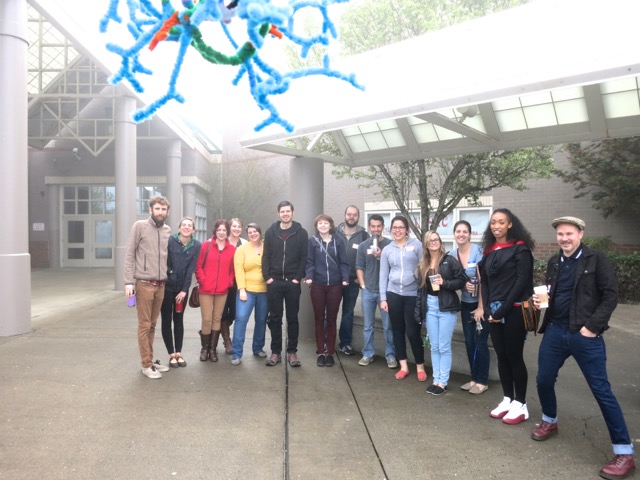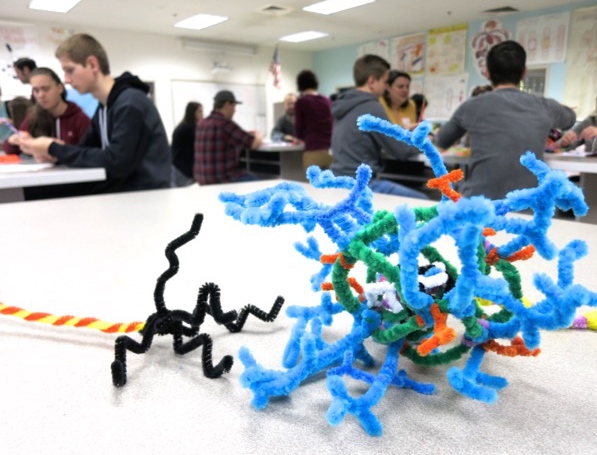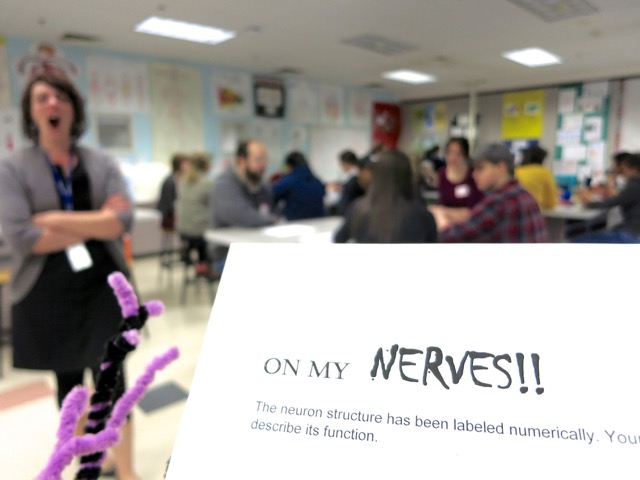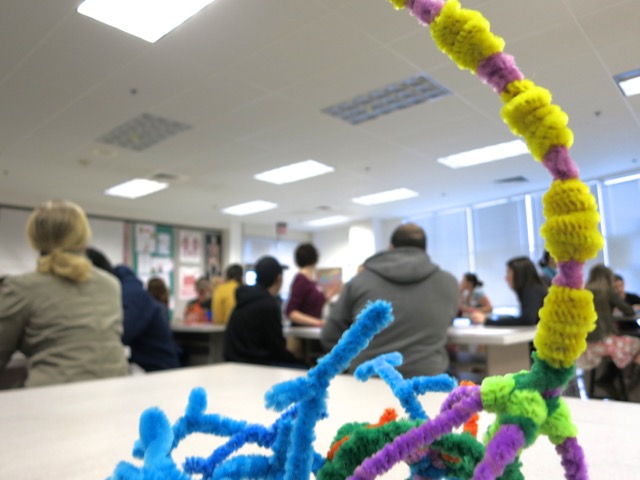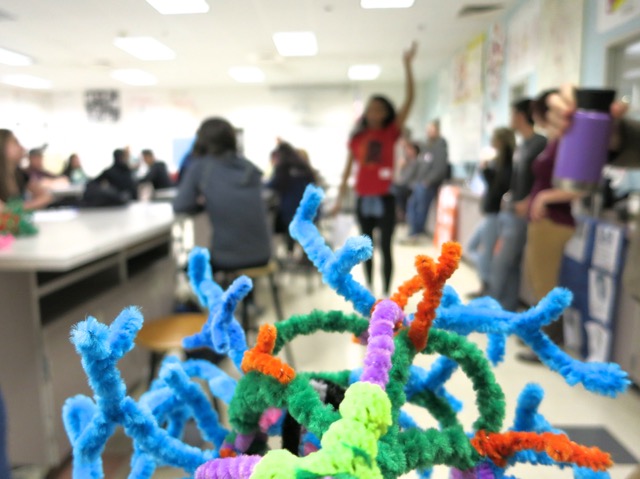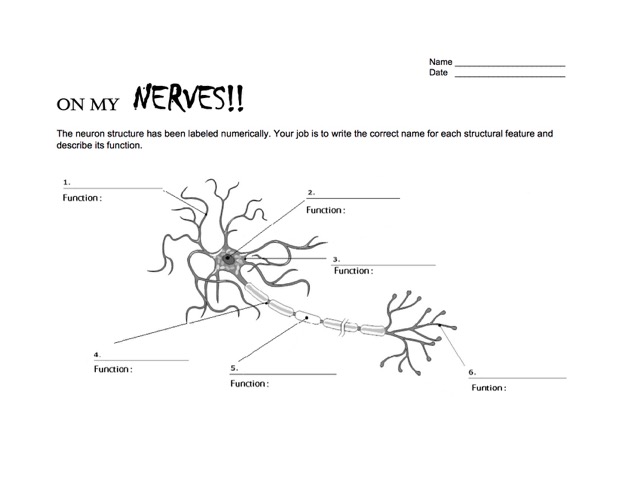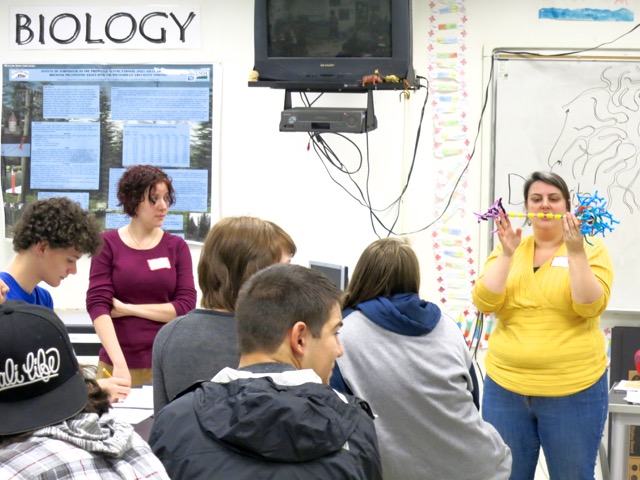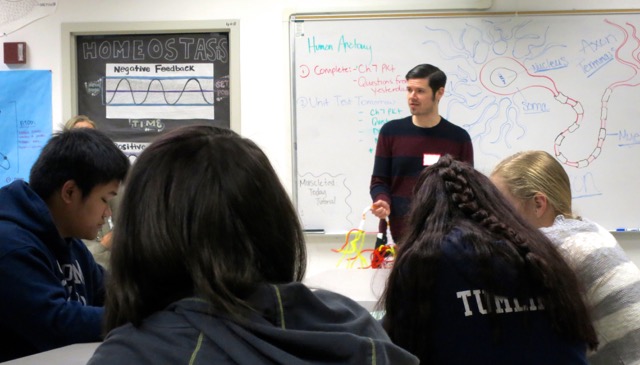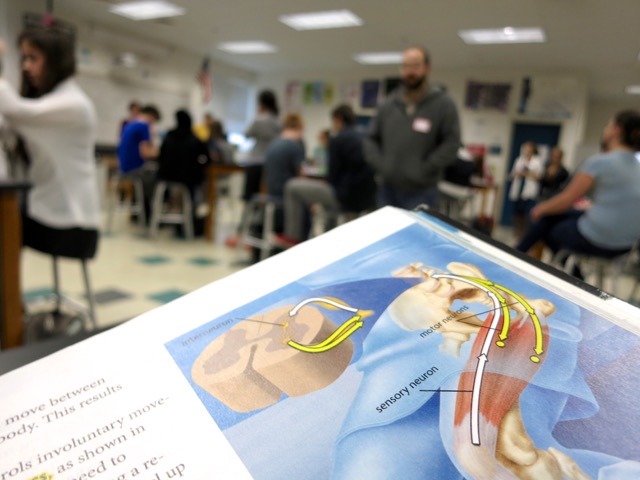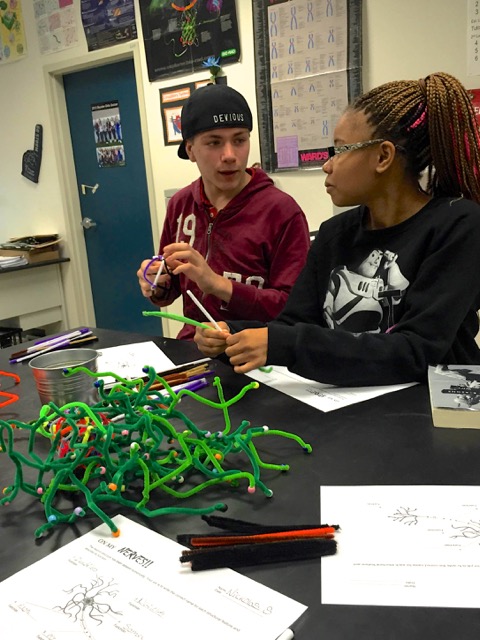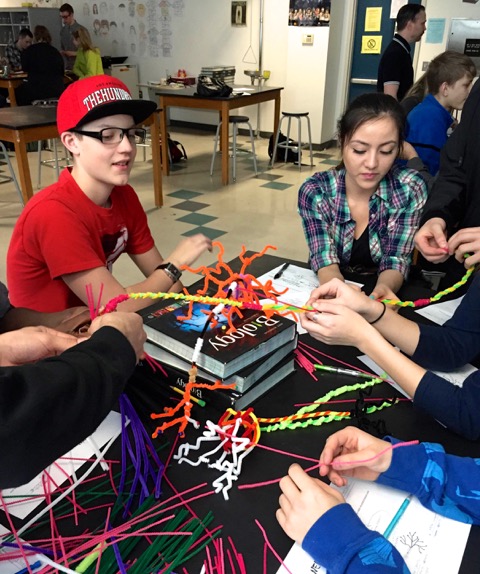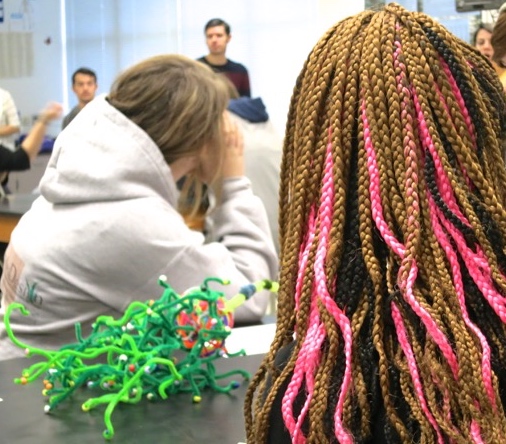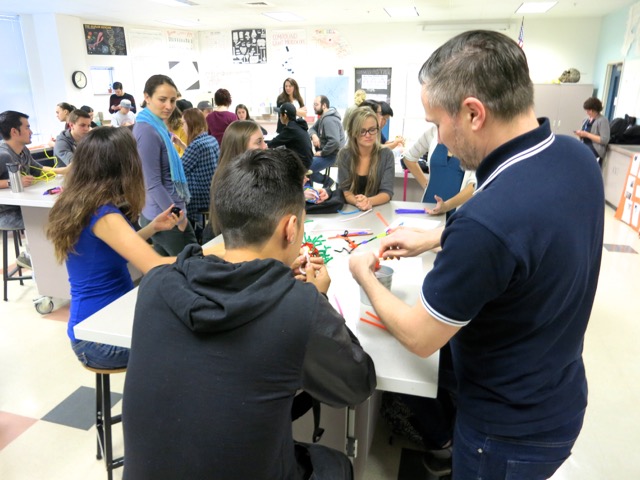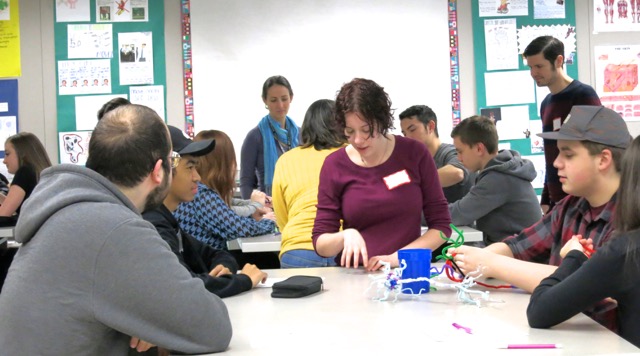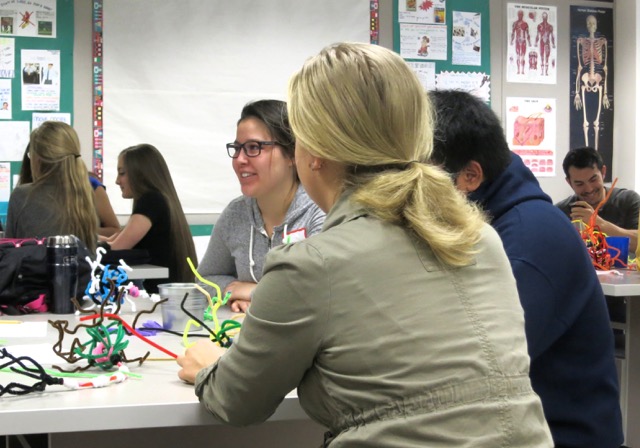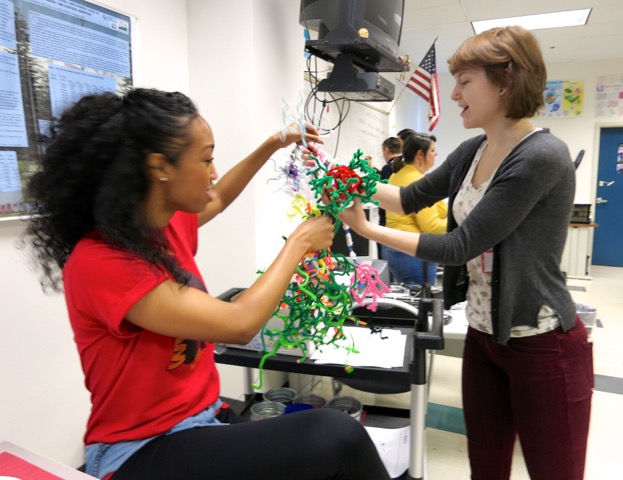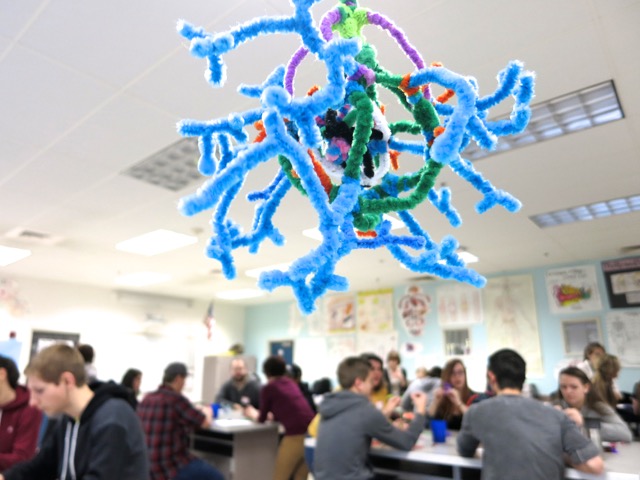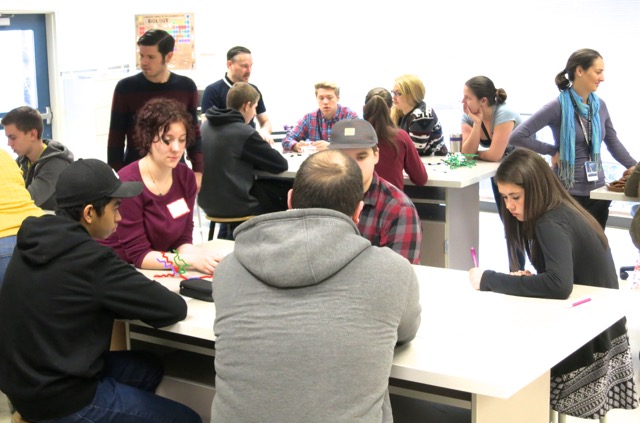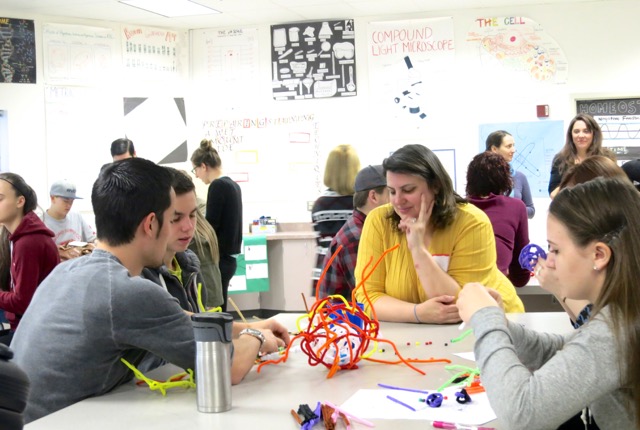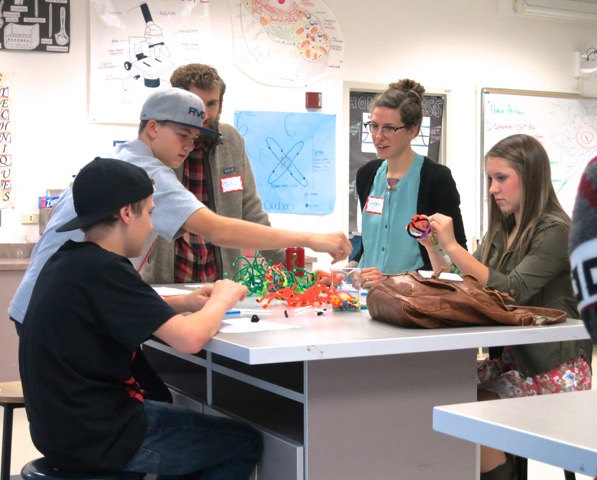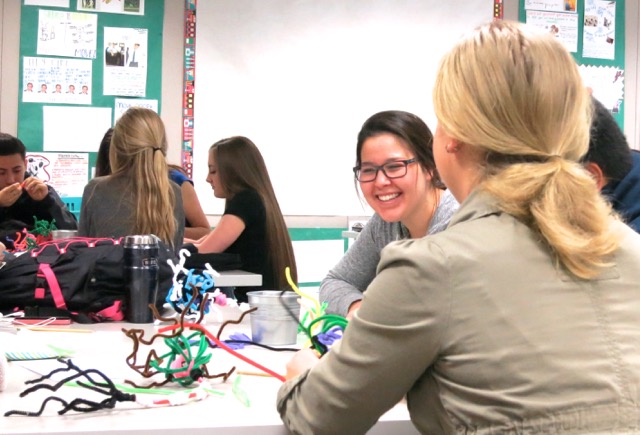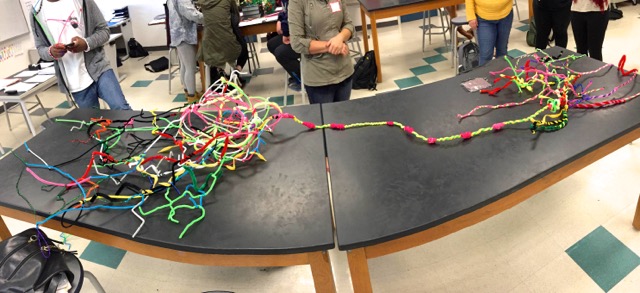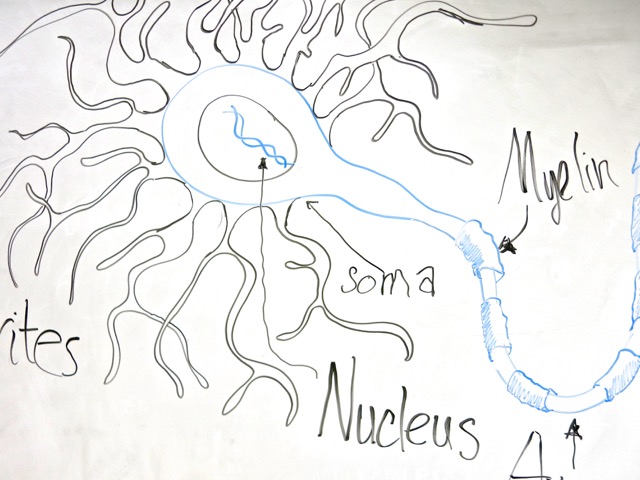We gathered again on a foggy Thursday at Skyview High…
Last week we’d introduced our students to large scale nervous system components, including the brainstem, cerebellum and various cortical lobes, using some real human brains as examples.
But this week we went small, providing an overview of the neuron. Each of us arrives as an infant with about 200 billion of these remarkable cells, which carry electrical messages along their lengths, and reach out to to form chemical connections with each other, at small gaps called synapses.
By the time we reach adulthood, we’re typically down to half that number, but the 100 billion cells that remain make more useful links, which lets information flow along networks to generate appropriate behavior in response to stimuli from our external, and internal environments…
Undergraduates took the lead in all three classrooms, explaining the structure and function of the branch-like dendrites, the neuron cell bodies, and the cell nuclei, axons, axon terminals and myelin sheaths…
They offered useful similes; for example, the axon is like a wire, and carries some information-rich electrical currents (though these are biological currents of moving sodium ions, and not the electrons found in copper wires in the wall)…
Our art project today involved the building of our own individual neurons, with all the important parts, out of those ever-versatile pipe cleaners. Students seemed to enjoy the creative effort…
Having these tangible examples of brain cells on classroom tables, along with small groups of students, and plenty of our undergraduate volunteers, allowed for more engaging discussions of how neurons connect, and how the environment can affect the growth of those connections…
For example, early exposure to certain environments can result in more dendritic projections (known as “spines”), which offer more membrane surface area for the formation of additional synaptic connections with other neurons…
Students were very struck by how an “enriched” environment, with lots of social opportunities, could lead to a dramatic increase in the number of dendrites, and dendritic spines, and thus a substantially larger number of synaptic connections.
With more neural connections formed during early life experiences, there are more options for the flow of information along these more complex neural “networks,” and thus greater cognitive potential or capacity of the individual…
This research, pioneered by Marian Diamond, led to the establishment of the federal Head Start program, to offer more children the chance to increase the connectivity of their own brains during critical developmental periods…
In the last class of the morning, the students pooled their artistic efforts to collaborate on building a GIANT neuron (some neurons reach from the brain to the base of your spinal cord, and from the tip of your toe to the brainstem!).
This particular brain cell was clearly raised in an enriched environment… 🙂
We’ll return next week to discuss synapses, and chemical communication, and how drugs influence this process, and change how brain networks wire up…
Our thanks again to Skyview Biology teacher Angela Fojtik, and to Hannah Valenti and Nina Stemm of GEAR UP…



